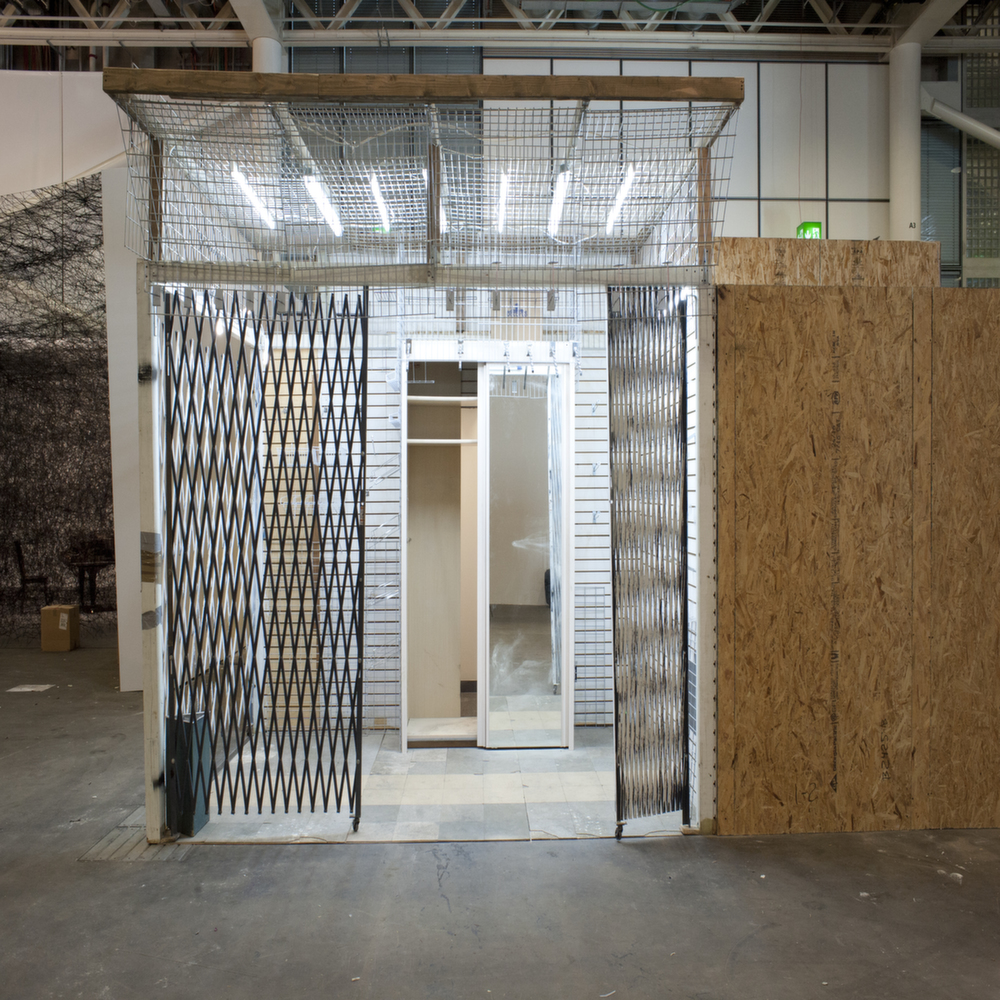Jonah Freeman and Justin Lowe Head Underground at Art Basel
Leave it to psychedelic- and counterculture-obsessed artists Jonah Freeman and Justin Lowe to disrupt the monotony of well-manicured booths at this week’s “Art Basel: Unlimited” in Basel, Switzerland. The artists’ large-scale installation, Artichoke Underground, continues to explore the narrative of the fictitious collective of the same name. As with previous installations, attention to detail, both in the execution and the colorful backstory, reigns supreme. Presented by Marlborough Chelsea, the piece features a series of seemingly disparate interiors including a Punjabi kitchen and an incubator for the study of plant consciousness—all part of the disorienting maze of scenes surrounding the Artichoke Underground (AU)’s print shop.
“The AU,” explain Freeman and Lowe, “was the beginning of a rebellion against corporate or government control of information.” Envisioned as a “conduit for underground information distribution,” the print shop is where the AU developed their magazines, posters, books, and alternative advertising materials. Founded by imagined cult figure Dr. Arthur Cook, the group also explored the development of mind-altering substances derived from plants. “Investigations into the consciousness of plants and the first plant and mineral hybrid species are things that go on in addition to the normal printing activities,” say Freeman and Lowe. These investigations were the predominant subject of Freeman and Lowe’s 2010 installation, Bright White Undergound, which depicted a house in which the group’s invented narcotic, Marasa, was manufactured. Psychedelics and printed matter converge when The AU ultimately attempt to invent their own type of media. “In the final days of AU, they began experiments into a new pharmacological/computer synthesis that would act as a new form of mind media alteration,” the artists tell us. “This was known as ‘The Octopus.'”
Never ones to steer clear of humor or rebellion, the artists included a familiar reference to Art Basel itself in their collection of carefully constructed interiors. “The empty trade fair booth is a slight dislodging of the art fair mode of display,” say Freeman and Lowe, who suggest that, just as their installation is part of the fair, the fair is in turn part of their installation. “The basic composition of our piece is a sequence of interiors, and the art fair could be seen as an extension of that sequence.”







